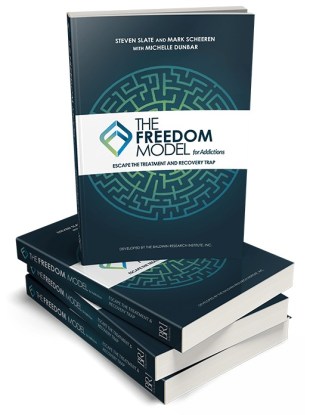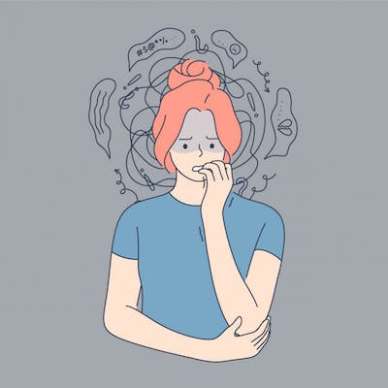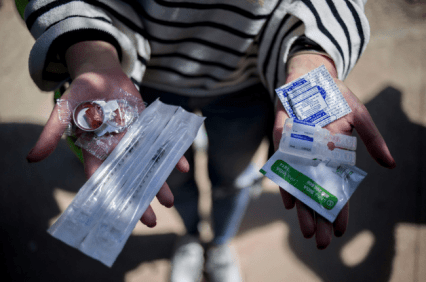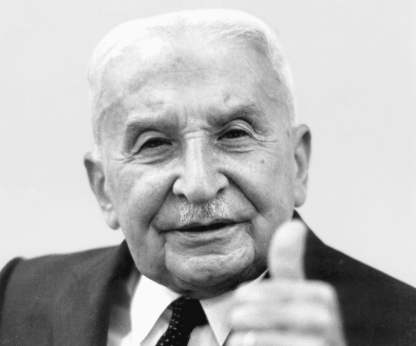How to solve the opioid crisis? Surely, there is no single solution since addiction is a complex problem. Any model that suggests that an addict has freedom of choice must be wrong by definition.
Consider what contributes to opioid addiction (or any addiction, for that matter). High living costs, financial stresses, genetics, altered brain chemistry, mental health issues, and other underlying causes.
Or is that all bunk?
Addiction experts tend to fall into two categories. The “left-wing activist” side pushes for “safer supply” and other taxpayer-funded “addiction medicine” brought to you by pharma.
At the same time, the other “right-wing reactionary” side wants to focus on traditional methods for recovery (or, at the very least, tweaking previous models to fit current realities).
This dichotomy is best highlighted in Canada’s two most western provinces: Alberta and British Columbia.
The Canadian Experience
B.C. has gone the way of decriminalization and taxpayer-funded supplies of pharma drugs. If you support Liberals and NDP, you tend to take this view. Alberta represents the other side, championed by Conservative politicians and denounced as reckless and inhumane by left-wing critics.
While it’s clear that the B.C. “safe supply” model doesn’t work, critics aren’t entirely wrong to denounce the Alberta model. The latest provincial data shows that Alberta just hit a record in overdoses, a 45 percent increase compared to the year before.
Which isn’t surprising. Alberta premier, Danielle Smith, parrots the language that recovery must focus on mental health. That users are “victims of the disease” of addiction.
This is what makes the Alberta vs. B.C. model a false dichotomy. If we want to solve the opioid crisis, we cannot rely on debates that don’t upset the status quo.
Whether we should supply people with “addiction medicine,” consumption sites, or a more traditional recovery model is not the issue.
Like with politics, we’re best to throw away these “left” and “right” labels and focus on one universal value we all share: freedom.
How to Solve the Opioid Crisis with the Freedom Model
Just as we won’t solve inflation without addressing the fraudulent banking system, we won’t solve the opioid crisis without first addressing why people like to consume fentanyl.
“It’s not okay in our culture to admit you like being high,” says Michelle Dunbar. “People who don’t like opiates don’t keep doing them.”
“People don’t do something they hate,” says Mark Scheeren. “They certainly don’t become habitual at something they hate.”
Mark and Michelle are co-developers, along with Steven Slate, of the Freedom Model. Unlike other addiction programs, the Freedom Model doesn’t rob people of their autonomy.
Many (if not all) recovery programs tell the user that they’ll forever be addicted. They must “work the steps” or have a blueprint for staying sober. Most of these “experts” follow the brain disease theory of addiction, further cementing the idea that our actions are outside our control.
The Freedom Model rejects that. For over 35 years, at the Saint Jude retreat and online, Mark and Michelle have helped tens of thousands of people break free from this “addiction” mentality and move on with their lives.
Whether that means moderate drug consumption or complete abstinence.
Dr. Carl Hart is living proof that even opioid consumers can moderate and experience withdrawal without having it ruin their lives. In fact, drugs can be an enhancement. That’s why we like to do them.
“The truth of matter is if we didn’t have the word addict,” says Mark. “It wouldn’t be an issue. If we used instead the term substance use, as we use in the book, suddenly that casts a completely different way of looking at it.”
So can the Freedom Model solve the opioid crisis?
What About Brain Hijacking?
The Freedom Model rejects that drugs can hijack the brain. The very concept makes no sense. But don’t substances, especially opioids, alter brain chemistry?
“I type 100 words a minute with less than three errors, typically,” says Michelle. “I’ve been typing for the better part of 40 years. But that doesn’t mean I have to type.”
“And that doesn’t mean,” adds Mark, “that the typewriter has hijacked her serotonin and dopamine receptors.”
The idea that we’re mere meat machines compelled to act by our brain chemistry is something the Freedom Model rejects.
“Addiction also means a dedication to something,” says Michelle. “Nobody gets dedicated to something they don’t see benefits in doing. I think a lot of times, too, when people say they don’t like it, what they don’t like is the high cost they’re paying for. They don’t like the negative consequences.”
But the idea we’re compelled to use because of changes to the brain?
“It’s fucking ridiculous,” says Mark. “It’s like a boxer who gets knocked out in the championship fight, and then says, ‘I hate boxing.’ You never hear them say that. They say they hate losing. So they get back into the ring to win. Drinking and drugging is exactly the same way.”
“As a past boxer,” adds Mark. “I know I was willing to pay the price of having brain damage.”
Isn’t Driving a Car Like Doing Drugs?
Mark and Michelle use the example of driving a car. It’s a dangerous activity with high costs (insurance, legal responsibilities, risk of injury). We don’t frame our preference to drive as a problem, so we don’t call it an addiction.
But don’t certain activities become so ingrained into our behavior that we don’t think about them?
Wouldn’t driving a car and not remembering the commute count as a “hijacked” brain? We’re driving, but we’re not conscious. Aren’t drugs like that?
Mark says suppose you were on your commute.
Out in la la land, and a deer jumps out. My god, you will remember that. But none of that is a criteria of a hijacked brain. That’s the criteria of habituated behavior, where the process of that habit doesn’t go to long-term memory. That has nothing to do with serotonin, dopamine, or any of the nonsense they’re trying to peddle these days as a cause for your behaviors. It’s just the same as any habit that you have. When you habitualize something dramatically, the brain prioritizes in memory and says, we’ll we’ve done this 18 times, this isn’t that important; we don’t have to remember it.
So that’s part of the answer. But what about underlying causes? If I’d rather live on the street and risk my life with fentanyl consumption, I must surely have some underlying mental health issue. Right?
What About Underlying Causes?
Attempts to solve the opioid crisis with standard ideas about addiction and recovery are not working. Whether you believe in the “left-wing” B.C. model or the “right-wing” Alberta model.
What will solve the opioid crisis is the Freedom Model.
One primary reason is their rejection of “underlying causes” for addiction. And while on the surface, this may seem radical, in reality, the role of “underlying causes” as a reason for addiction is a new concept.
Says Mark,
For thousands of years, there’s been inklings and whisperings of this, but nobody really believed that alcohol or drugs were an actual mental elixir. They knew it might be a distraction; if you look in the fables and the Bible, you can see in Proverbs and different places, but nobody took it very serious. Because basically, alcohol and drugs were seen as an activity. They weren’t seen as a medicine. Or that I self-medicate my problems away. That’s a relatively new idea within 80 years.
Michelle references the research and data in the book, particularly in chapter six. She says,
You can clearly see that the vast majority of people who suffer from PTSD, or depression or anxiety, or even bipolar, and some of the other mental health issues – don’t have a substance use problem. They just don’t. There’s not even a weak correlation between these things.
Furthermore, Michelle points out that a small percentage of both tend to get over their substance use problems before solving their mental health issues.
Indeed, If I went to a therapist who said, “You need to keep abusing opioids until we figure out your other problems,” I’d demand a refund. But in treatment, this is the message. You will not solve your addiction until you solve your mental health issues.
“It’s very sad. It’s a horrible, infinite loop that people can’t seem to get out of,” she says.
How The Freedom Model is Different
Mark explains how the Freedom Model is different.
We say: you have anxiety, normal. You have depression. Everybody’s experienced it. You have all these issues, and then we look at the research, and we say, it doesn’t really matter what of these mental issues you might have. You don’t have to marry it to the fact that you like to get high. So we separate it and deal with each one independently.
Instead of “underlying causes,” the Freedom Model emphasizes learned connections. Where you may have trauma, depression, or anxiety, and then you take these problems and associate them with the physical buzz of the drug or drink of your choice.
But the idea that opioids (or even cannabis, for that matter) can solve (or exacerbate) your mental health problems is totally bunk.
This is How We Solve the Opioid Crisis
The Freedom Model is how we solve the opioid crisis. Not by supplying more drugs courtesy of the taxpayer.
Not by looking for “underlying causes” and addressing “mental” health. The only way a homeless addict will stop (or moderate, at least) is by literally changing their mind.
The recovery society wants to deprive them of this. Treatment wants to take away their fentanyl and then act like their preference for the Chinese killer drug is a disease or disorder.
I would imagine the biggest challenge for the Freedom Model is the critics. “Addiction” as a social construct? People living on the street doing opioids who have freedom of choice?
According to Mark and Michelle, the biggest challenge isn’t detractors but tech companies.
“If the book was in the hands of everybody who had a problem, I almost guarantee that 80% would embrace it,” says Mark.
That may seem like a bold claim (like how to solve the opioid crisis with the Freedom Model). But that rate has been the reality of Mark and Michelle’s experience helping others with substance use. And they’ve been doing it for 35 years.
Tech Companies Are Their Biggest Challenge
“Our biggest problem is that the tech companies don’t allow us to spread our message,” says Mark. “It’s purely, purely, tech shadow banning.”
It’s too early to tell if Elon Musk’s Twitter/X is helping reverse the algorithm. But, as Mark and Michelle experienced in the comment section of their YouTube Shorts, this message requires nuance.
But even beyond the nuances of the Freedom Model, there’s money and job security in protecting the status quo.
While the Canadian left wing ironically rewards the big pharmaceutical companies with “safe supply,” Conservative leader Pierre Poilievre says he’ll sue the pharmaceutical companies.
But this is a path Americans already went down. Says Mark,
Statistically, prior to fentanyl, the overdose rates were incredibly static. Right around forty to fifty thousand people a year in Ameirca. And that was static for decades and then fentanyl hits, gives opioids a terrible name, because you’re lacing the opioids with fentanyl, and you have all these kids dying. Then the government needed to demonize someone. So the government got into cahoots with pharmaceutical companies and said, we need something. We’re going to sue the shit out of you for making opioids because the public is demanding it.
But behind the scenes, they said, let’s create the narrative that there is now addiction medicine, Suboxone (Buprenorphine). So we’re gonna sue you, but don’t worry, you’re going to make it on the backend over here with some Suboxone, and we’re going to get these people hooked for life on addiction medicine.
Mark and Michelle question this narrative that people get addicted to opioids because doctors over-prescribe them.
“We’ve had 20,000 people come to our retreats over the years,” says Michelle.
In the beginning, nobody said that, but in the last 15 years, everybody said it. But the truth of the matter is my first time using an opioid was at a party, and I liked it. If you ask most people, they’ll say, I liked the feeling of being on opioids. That’s why I kept using opioids. Not that ‘I found myself hooked, because I took them for a medical problem.’
Heroin’s been around forever. But the narrative never was, ‘Oh, I got surgery for a broken leg, and then I was opioids, and then I ended up shooting heroin.’
And now they’re prescribing it for people that are on amphetamines, people that used alcohol, benzodiazepines, which is deadly, I can’t even imagine. It’s now “addiction medicine,” so everybody gets it.
And the pharmaceutical companies are profiting massively from it. They’ve made up for what they lost in the lawsuits.
How to Solve the Opioid Crisis with the Action Axiom
Of course, there is no such thing as “addiction medicine” since there is no such thing as addiction.
While readers may nod in agreement when we criticize a new pharmaceutical for treating “cannabis use disorder,” some may scoff at the idea that you can’t get addicted to cocaine or opioids.
But this gets backs to what the Freedom Model is all about.
“My whole life, I was obsessed and still am with why people do what they do,” says Mark. He says he first focused on what motivates us to act.
“Is it pain or is it pleasure? There was a tremendous amount of research that said that people are avoiding pain, but I suddenly realized, even when people are avoiding pain, they’re trying to get to a better position.”
Mark realized this while living with his guests, where he purposefully didn’t read any research for ten years. Understanding why people were drugging and drinking despite the high costs and negative consequences was like turning a light on.
So I started to reframe this in my mind and I started realize that humans are always, always moving in the direction of some sort of benefit to themselves. And then that went to, oh my god, they’re autonomous, they have their own thoughts and drives, and then I realized, oh my god, that means we’re a free thinking person, an individual.
If this sounds familiar, it’s because, as Michelle pointed out, many ancient philosophies, like the Stoics, came to similar conclusions. I pointed out that this also sounds like Ludwig von Mises in his opus, Human Action, where he referred to this knowledge as “praxeology.”
Jordan Peterson’s first book, Maps of Meaning, also seems to dance around with this idea. As does the work of urban theorist and social critic Jane Jacobs.
Freedom Works
“When I was little,” says Mark. “I had no control; I was a beaten, neglected kid in a terrible environment. I realized the only place I had freedom was within myself. And I have now watched many people, good lives, bad lives. They’re all living within themselves as autonomous individual people. What a beautiful thing. It’s a miracle.”
Yet, this isn’t what modern addiction and recovery programs are based around. Says Mark,
Recovery is completely dependent on this idea that there is some exterior force, this amorphous thing called “addiction,” this malevolent thing that attacks you and overtakes your psyche and makes you broken. That’s where the whole tyranny of experts comes from. We end up giving our rights away, and the entire legal system gets wrapped into it.
How to Solve the Opioid Crisis for $225
Not only can the Freedom Model solve the opioid crisis, but it can do so cheap compared to rehab costs or a taxpayer-funded supply of “safe” pharmaceutical drugs.
The best part is “addicts” don’t have to go to a physical location (unless they want to). There’s also no separation from friends or family. Mark and Michelle won’t take your phone away and treat you like a prisoner or misbehaving child.
“One of things I started to study was how families can help their loved ones best,” says Michelle.
And it really turns out how to help them best is to leave them alone. Listen to them. Be respectful of their wishes and their opinions, and not thrust their own wants and needs and things on this other person. If you’re going to help somebody who’s struggling with an addiction, a lot of times what that turns into is “You have to change your behavior so I can be happy.” That’s not fair.
Mark and Michelle take the approach, “I don’t know what’s best for that person.” It’s not up to them to decide whether you should consume or not consume opioids (or cannabis, alcohol, gambling, porn, whatever).
“But what is up to me,” says Michelle, “Is to give people the information and then give them room to figure out for themselves how they can be happy in their lives.”
“You were born with every single thing you need to do to get over a drug and alcohol problem,” says Mark. “You don’t need the recovery apparatus, you don’t need meetings, you don’t need rehabs, you don’t need MAT drugs, what you need is the truth.”
Resources
Fortunately, you can find The Freedom Model online. But not every homeless opioid user is going to read a 480-page book. (Not even the audiobook or the free abridged version.)
You may also be struggling and don’t find “self-help books” particularly interesting or helpful.
For that, the Freedom Model has an online masterclass for only $225. I’m not making any commission or financially benefiting from this program. I simply want to solve the opioid crisis without lining the pockets of the politicians and pharmaceutical companies responsible for this mess.
Or by ceding to the “public health” busybodies that call for restrictions on the cannabis industry, label addiction as a brain disease, and treat contrary opinions as “misinformation.”
The Freedom Model is the only model that makes any sense. If you or someone you know is struggling, why not give it a try?
- SEO Powered Content & PR Distribution. Get Amplified Today.
- PlatoData.Network Vertical Generative Ai. Empower Yourself. Access Here.
- PlatoAiStream. Web3 Intelligence. Knowledge Amplified. Access Here.
- PlatoESG. Automotive / EVs, Carbon, CleanTech, Energy, Environment, Solar, Waste Management. Access Here.
- PlatoHealth. Biotech and Clinical Trials Intelligence. Access Here.
- ChartPrime. Elevate your Trading Game with ChartPrime. Access Here.
- BlockOffsets. Modernizing Environmental Offset Ownership. Access Here.
- Source: https://cannabislifenetwork.com/how-to-solve-the-opioid-crisis/









